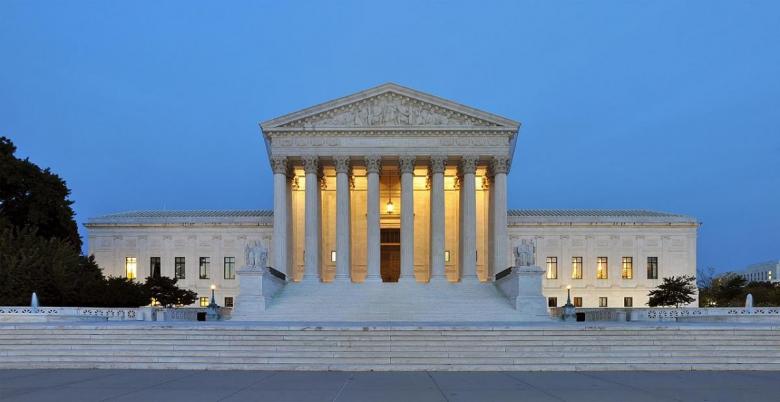Biden Revokes Trump's 'Beautiful Architecture' Executive Order
US President Joe Biden has revoked Executive Order 13967, "Promoting Beautiful Federal Civic Architecture," that former President Donald Trump signed on December 18, 2020, one month before the end of his term.
Yesterday's revocation of Trump's controversial (to architects, at least) order is hardly surprising, given how much the early days of President Biden's administration involved overturning many of the executive orders signed by his predecessor. Every president has the power to create executive orders, which function as directives targeted at managing the operations of the federal government. But presidents can just as easily overturn them as well.
Trump's executive order would have mandated classical architecture as "the preferred and default architecture for Federal public buildings" in Washington, DC, vaguely promoted beauty in certain federal buildings outside of DC, and established the "President’s Council on Improving Federal Civic Architecture," which would have submitted a report "recommending updates to GSA’s policies and procedures to incorporate the policies" of the order. The last illuminates the order's main goal: reversing the Guiding Principles for Federal Architecture that was established in 1962. The executive order argued those Guiding Principles, as laid out by Patrick Moynihan, have led to buildings of "little aesthetic appeal."
While Biden's overturning of Executive Order 13967 (they are numbered sequentially, with the first signed by President George Washington on June 8, 1789) throws out the misguided mandate for a single style of federal architecture — and hopefully starts to remove similar language already inserted into contract proposals — the Trump administration's appointments to the Commission of Fine Arts remain in place. All seven members of the Commission were appointed by Trump, the earliest being its chairman, Justin Shubow, appointed in October 2018. (Four of the members, who serve four-year terms, were appointed on January 19, 2021, one day before Biden was sworn in as the 46th US President.) Shubow, president of the National Civic Art Society, is strongly believed to be the main author of the executive order, whose draft was obtained by Architectural Record one year ago. All seven members are men, white, and strongly aligned with classical over modern principles.
The main task of the Commission of Fine Arts "is the review of design proposals for public and private properties in the National Capital," not including the US Capitol, the Library of Congress, and other buildings under the purview of the Architect of the Capitol. The review of projects by the Commission is part of an approvals process that also includes such agencies as the National Capital Planning Commission. But the CFA does not approve — they endorse a project when the review is positive. The most famous recent review process was focused on Frank Gehry's design for the Eisenhower Memorial, which opened last year, more than ten years after Gehry won a competition to design it. The most vocal opponent of the design was Shubow's National Civic Art Society, which repeatedly lobbied to block the project.
It remains to be seen how the Trump-appointed CFA will conduct itself on projects coming before them for review. The destruction and looting of parts of the US Capitol Building by Trump supporters illustrates the political nature of the Promoting Beautiful Federal Civic Architecture order: it was about control and taking an anti-academic position. Even though many Americans prefer classical architecture over modern architecture, just as many disagree with mandating ones style over another. With social issues rising to the top in architecture schools and other areas of the profession, the style wars are increasingly a thing of the past — just like Trump's executive order within the Biden administration.

